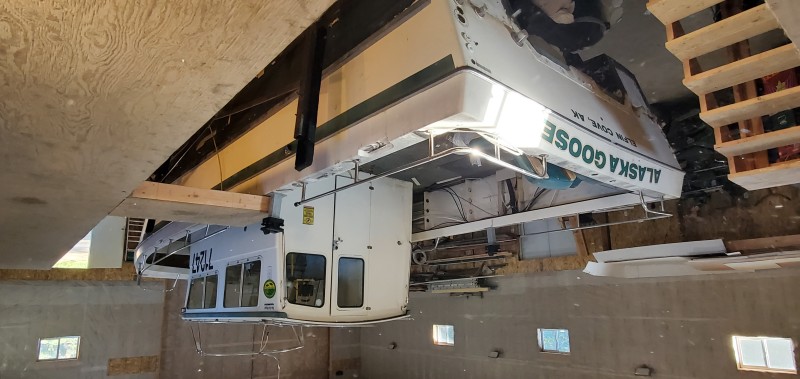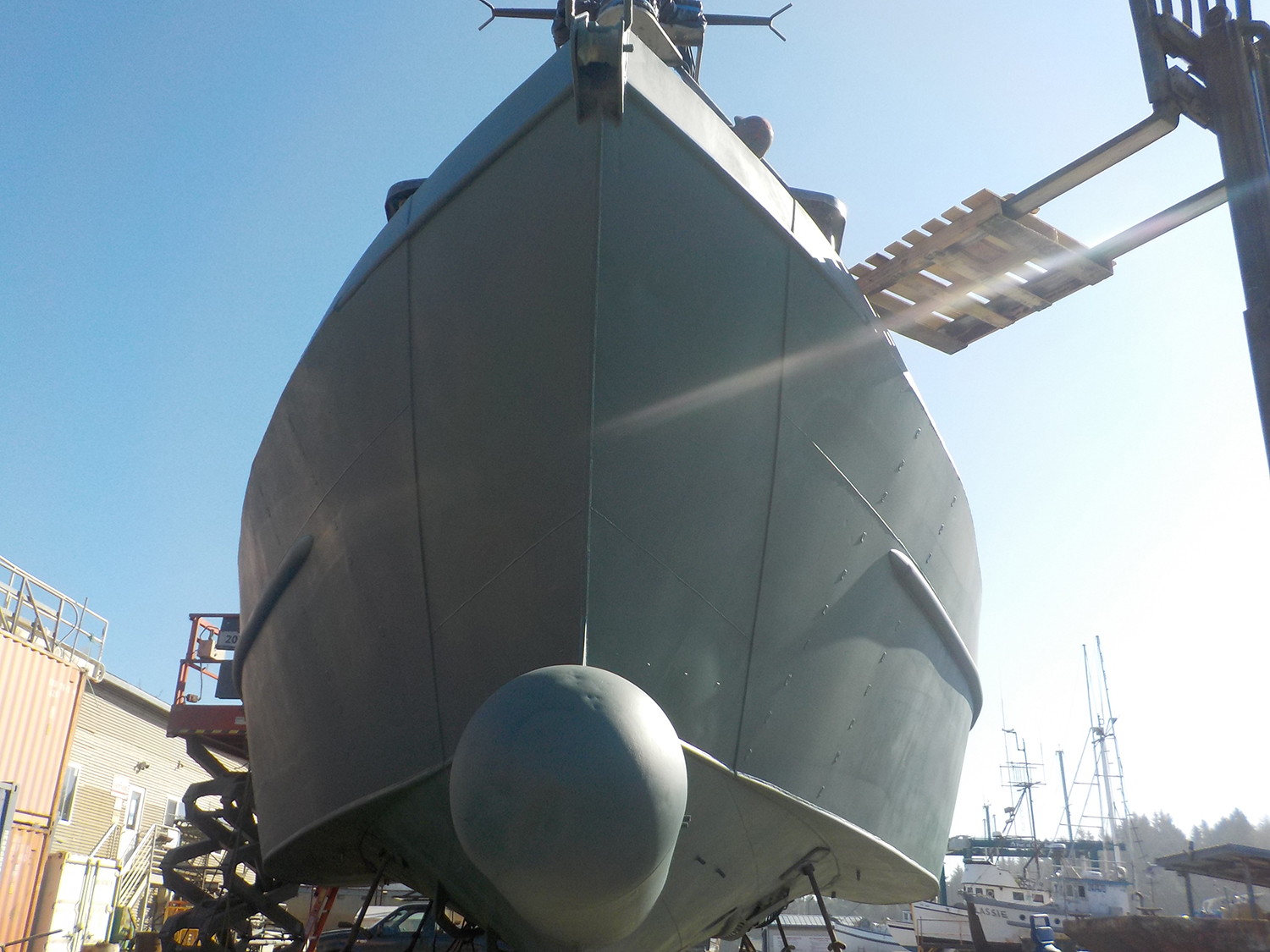It’s been 14 years, but if you watched Season 2 of the “Deadliest Catch,” you might still recognize the Aleutian Ballad that was at Giddings Boatworks in Coos Bay, Ore., this September. Only today she’s not the Bering Sea crabber she was on the show.
The Aleutian Ballad, operating out of Ketchikan, Alaska, has her deck filled not with crab pots when she leaves the dock, but with people. The former crabber is now a tour boat with ex-Bering Sea fishermen as crew, telling up to 150 guests in stadium seating on the main deck what life on a 110-foot fishing boat is like and showing them how to set and retrieve longline gear and crab pots, all in a three-hour tour that includes some favorite eagle sites. They call it the Bering Sea Crab Fisherman’s Tour.
The Aleutian Ballad was at Giddings for a new bow thruster, two Fernstrum keel coolers to replace skeg coolers, a new fire protection system, new hull plating, sand blasting 90 percent of the hull and painting.
A much smaller crabber and blackcod boat, the 50-foot Ginny G was also in to be blasted and painted. Some hatches need repairing, as does the bow’s anchor roller.
The 45-foot crabber Darean Rose has been at Giddings Boatworks for almost a year. She was sponsoned 2 feet 6 inches on each side, giving her a 19-foot beam. In early September, the yard crew was installing all new mechanical and electronic systems to replace what was destroyed in what will undoubtedly be a story told for a long time around the docks of Coos Bay and the Pacific Northwest.
The story started the afternoon of Dec. 26, 2019, when the Darean Rose, loaded with crab pots, hit a sand bar off a fuel dock and turned on its side, as she was heading out to set the first pots of the season. Curtis Green, operations manager of the fuel dock, saw the wheelhouse was full of water and inside were three people “beating on the glass,” according to The World, a local newspaper. “They couldn’t get out because the crab pots blocked the back door,” Green told the paper.
Then Green, hammer in hand, jumped in the water and swam to the boat. As he beat on the wheelhouse glass, Green could “see the whites of their eyes.” Then he lost the hammer but a crack had developed in the glass and he smashed it with his fist until the glass broke. “They were taking their last breaths of air,” he remembered, before pulling the three men out of wheelhouse. Then they sat together on the bow.
John Schumacher at Distinctive Finishes in Haines, Alaska, sent two Snowballs out of his shop last June. One was a 40-foot gillnetter that was repowered, had the deck replaced and new fish holds added; the other was a 28-foot sternpicker that got three new fish holds. Other than a 39' 11" gillnetter that was in to be painted, work ceased once the salmon season started. Salmon season ends Oct. 1, and then Distinctive Finishes might have a salmon boat in for a new engine, some tearing apart and a new cabin.

That seasonal lull in the boatbuilding business is not uncommon, but Schumacher has an income-generating idea for filling the void, which currently happens to be on his shop floor. That would be a fiberglass catamaran he is turning it into a troller for himself.
“When not busy I can be out trolling and making money catching salmon,” he says. That’s one possibility. The other is using the catamaran as a working platform that would take him to a boat that needs repairing during the fishing season. “Pull up to a boat and have everything ready to go.”
Additionally, by his use of the catamaran as a troller, he hopes to start fishermen thinking that maybe a catamaran would work for them, and with the hull molds in Haines, a new hull would not be a problem. “It would be great for crabbing,” says Schumacher, with plenty of room on the back deck for a crabber or shrimper to hold pots.
Schumacher is in the process of lengthening the boat from 30 to 33 feet by adding to the stern. The back deck will be rebuilt, and up forward he’s adding a trunk cabin and gutting the interior. So it will accommodate bunks for two or three, a galley, head and a shower.
A pair of 250-hp Tohatsu outboards will be on aluminum outboard brackets with a 15-hp “kicker” in between. The 250s should get the catamaran up 48 knots. “They’ll get you to the grounds fast and then you can troll all day with the 15 horsepower. You’ll probably use about 3 gallons a day just trolling.”
Schumacher says he has talked to “some commercial guys about (the catamaran) for crabbing, and they said it would be an excellent way to fish.”







